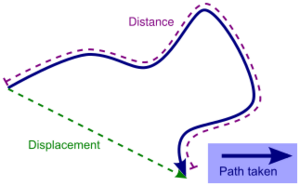Biology:McCutcheon index
The McCutcheon index or chemotactic ratio is a numerical metric that quantifies the efficiency of movement. It is calculated as the ratio of the net displacement of a moving entity to the total length of the path it has traveled. [1][2]
- [math]\displaystyle{ \text{McCutcheon index}= {\text{Displacement}\over \text{Distance}}. }[/math]
The index acts as an evaluative measure of the directness of movement. A value close to 1 indicates that a moving entity performed its movement in a very direct manner, minimizing detours. On the other hand, a lower value indicates that the entity has achieved only a marginal net displacement, despite traveling a considerable distance. The index is used to evaluate movements of, for example, leukocytes, bacteria, or amoebae.[3]
It is named after Morton McCutcheon who introduced it to describe chemotaxis in leukocytes.
References
- ↑ Chemotaxis in Leukocytes
- ↑ The response of human neutrophils to a chemotactic tripeptide
- ↑ Levandowsky, Michael; White, Benjamin S.; Schuster, Frederick L. (1997). "Random Movements of Soil Amebas". Acta Protozoologica 36 (4): 237–248. https://rcin.org.pl/ibd/Content/13306/PDF/WA488_17711_P1825-T36-nr4_AP.pdf. Retrieved June 9, 2023.
 |


